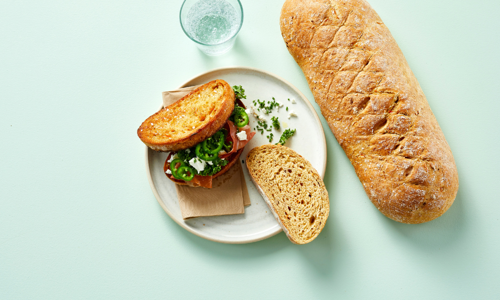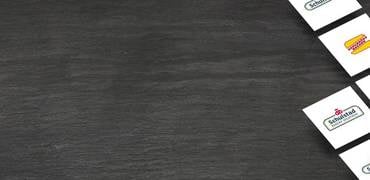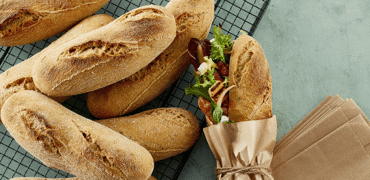Consumer awareness and new flour type pave the way for more fiber-rich bread products

With the recent US launch of six new Artisan Demi Loaves high in fibre, Lantmännen Unibake is supporting a rising Health & Nutrition trend in the market. Consumers express a growing interest in eating food with a lot of essential nutrients such as fibre-rich bread.
Earlier in 2024, Lantmännen Unibake USA launched six new Artisan Demi Loaves that are high in fibre and with a lower sodium level. The key ingredient in the loaves is a new fibre-enriched flour type. When the cereal is grinded and turned into flour, the product contains almost 10 times the amount of fibre compared to normal white wheat flour and almost twice the amount of fibre compared to wholegrain flour.
![]()
Given consumers’ rising awareness on health and nutrition, fiber-rich bread will be a selling point for brands who want to offer healthy products for a consumer segment who cares about what they eat, and how their diet can support a healthy lifestyle
“It is no secret that the new flour type is more expensive than regular flour types, and prize is a barrier for some of our customers. But there is also a scenario where we experience a consumer push for more bread products with high amounts of fibre and other nutritional benefits without compromising on taste. This new flour type fits perfectly into that trend,” says Marika Lyly, Nutrition & Research Manager at Lantmännen Unibake.
“Given consumers’ rising awareness on health and nutrition, fiber-rich bread will be a selling point for brands who want to offer healthy products for a consumer segment who cares about what they eat, and how their diet can support a healthy lifestyle.”
The new flour type is also available in Europe, and Lantmännen Unibake is open for customer dialogues on how to use it for both new and existing bread recipes, Marika Lyly explains.

Important for public health
Health authorities in the Western World are pushing for a healthier diet to improve public health. The American Heart Association Eating Plan suggests eating a variety of food fiber sources. Total dietary fiber intake should be 25 to 30 grams a day from food, not supplements. Roughly the same guidelines can be found in the Nordics and in other European countries like France, UK, Italy, and Germany. The Nordic Nutrition Recommendations 2023 state that high intake of dietary fibre may have a role in reducing the risk of many non-communicable diseases. That is why fibre plays such an important part in health-promoting dietary habits. Good sources of dietary fibre are grain foods, especially if rich in fibre (fibre content min 6g/100g), fruits, vegetables, pulses, nuts and berries.
In short: Eat more fibre and enjoy the health benefits!
High general awareness of fibre benefits
In November 2022, Lantmännen Unibake launched a Consumer Tracker across nine key markets to gather consumer insights on Health & Nutrition. The questions focused on the overall importance for consumption; awareness of the health benefits of fibre, salt, and wholegrains; triggers and barriers for choosing fiber-rich products etc.
Overall, consumers are highly concerned with the health impact of their daily diets. Some of the key fibre takeaways from the survey were:
- High general awareness of fibre benefits: 58-71% of consumers know that eating fibres has several health benefits
- 61% of consumers claim to actively choose fibre-rich foods always/most often, and 52% say they eat more fibres than 1-2 years ago. Only 9% claim to eat less fibre
- Bread is seen to be the most important source of fibre in consumers’ diets
- The key reasons for choosing fibre-rich products are the health & nutrition benefits (54%), but 38% of consumers prefer the taste
- Only 23% state taste as a primary barrier for choosing fibre-rich products. Actionable points like price (27%), availability (19%) and habits (16%) are the other key barriers
























